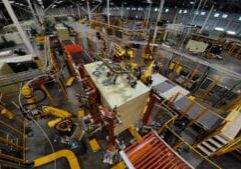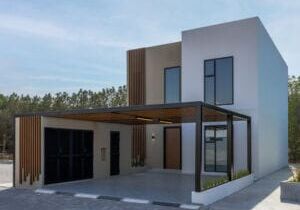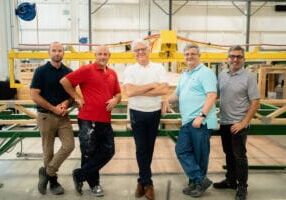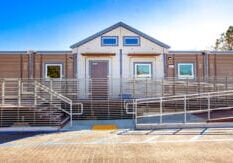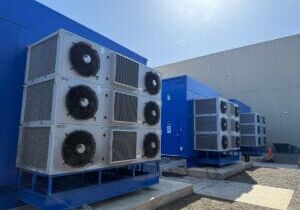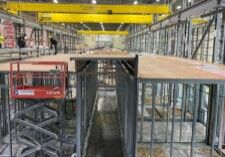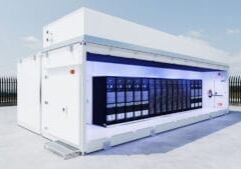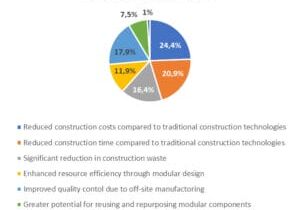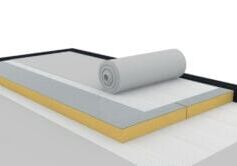Customized & Complex: Inside the Construction of the Nation's Largest Modular Hospital
Some people love a challenge, and some companies grow to specialize in tackling challenging projects. MODLOGIQ, located in New Holland, Pennsylvania, has developed expertise in building healthcare facilities, a demanding enterprise for any builder. With roots going back to the 1970s in Canadian manufacturer NRB with owners Bob and Craig McNeil, MODLOGIQ was spun-off from NRB as a result of the sale of the Grimsby operation in 2019 with Jim Gabriel as President and CEO.
The company continues today in taking a problem-solving approach to applying the benefits of off-site modular construction, Gabriel said, to a number of current challenging projects. “Our philosophy has always been that we’re not necessarily modular builders, we’re problem solvers. We take a collaborative approach to that,” he added.
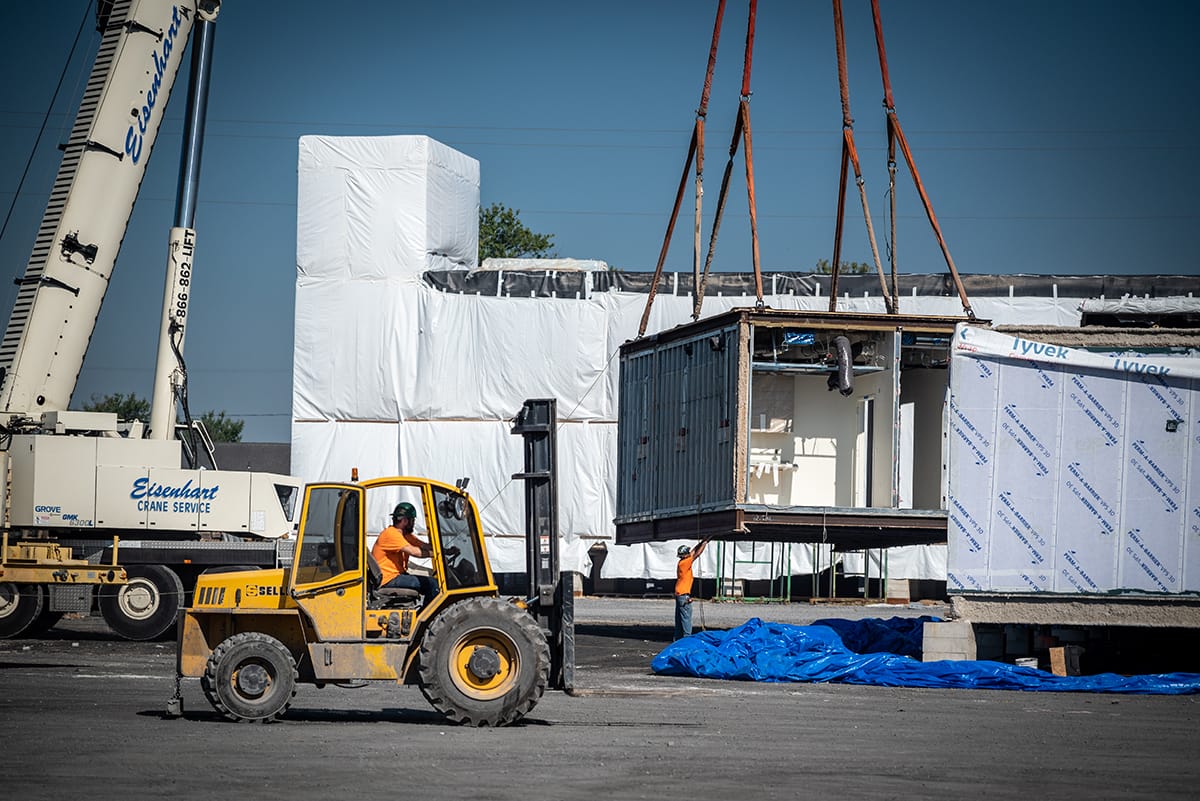
Modules intended for the Athens Medical Campus in Athens, OH, are craned into position during its offsite construction.
A Unique Focus On Modular Healthcare Facilities
MODLOGIQ has a long history of building modular healthcare facilities, such as their recent hospital project in Athens, Ohio. Compared to other types of modular projects, such as hotels, for example, healthcare facilities tend to be more complex projects, Gabriel said.
“We’re low volume, high custom, and high level of complexity, and so we’re the company that takes on all the other types of more complex projects. And so healthcare became a natural fit,” he added.
All building projects involve layers of complexity, especially when working with clients and their expectations, but some projects are at different levels. “It’s not easy, but it’s easier to modularize a hotel. It’s easier to modularize single family and multifamily. It’s easier to take what modular is and apply it to those applications,” he noted.
“It’s pretty difficult to do that with the health care and the patient-care environment,” he said. “And so whether it’s patient care, whether it’s laboratories, health science-type applications, it’s highly complex, not just in what’s performed in those, but how do you get to an efficient level of constructability when it comes to the design and execution? And can you provide a suitable alternative to conventional construction?” he continued.
Obviously modular can provide a suitable alternative to conventional construction, and two factors stand out as major benefits, Gabriel noted. Modular construction can overcome the schedule problem, which matters a lot to a revenue-generating organization such as a healthcare group. Getting the new facility operational in the shortest possible timeframe means, basically, less time in cash outflow before moving on to cash inflow.
Addressing the labor challenge is another advantage for modular construction. When traditional contractors are facing labor shortages, they may be running a team of mid-level competence and may be running shorthanded. A healthcare facility is a complex project that requires high competence, and many contractors don’t want to bid that work based on concerns over their ability to execute.
“You don’t want to position yourself to fail,” Gabriel said, “so you’re going after the work that’s easier to execute. So what healthcare providers, administrators, and owners are finding is that they’ve got fewer qualified contractors who have less labor to apply to their projects, and so the cost per square foot is going up and so is the time to completion.” In contrast, Gabriel noted, “With our focus on healthcare, we bring speed to market. We’re able to provide clients with a more efficient path to getting to a complete turnkey solution.”
Of course, the modular industry is not immune from labor challenges, but adapting to current market conditions is crucial. “Everyone has the same challenge with labor,” he added. “The question is: how efficiently are you using your labor? And as an industry, modular construction generally has used that more efficiently.”
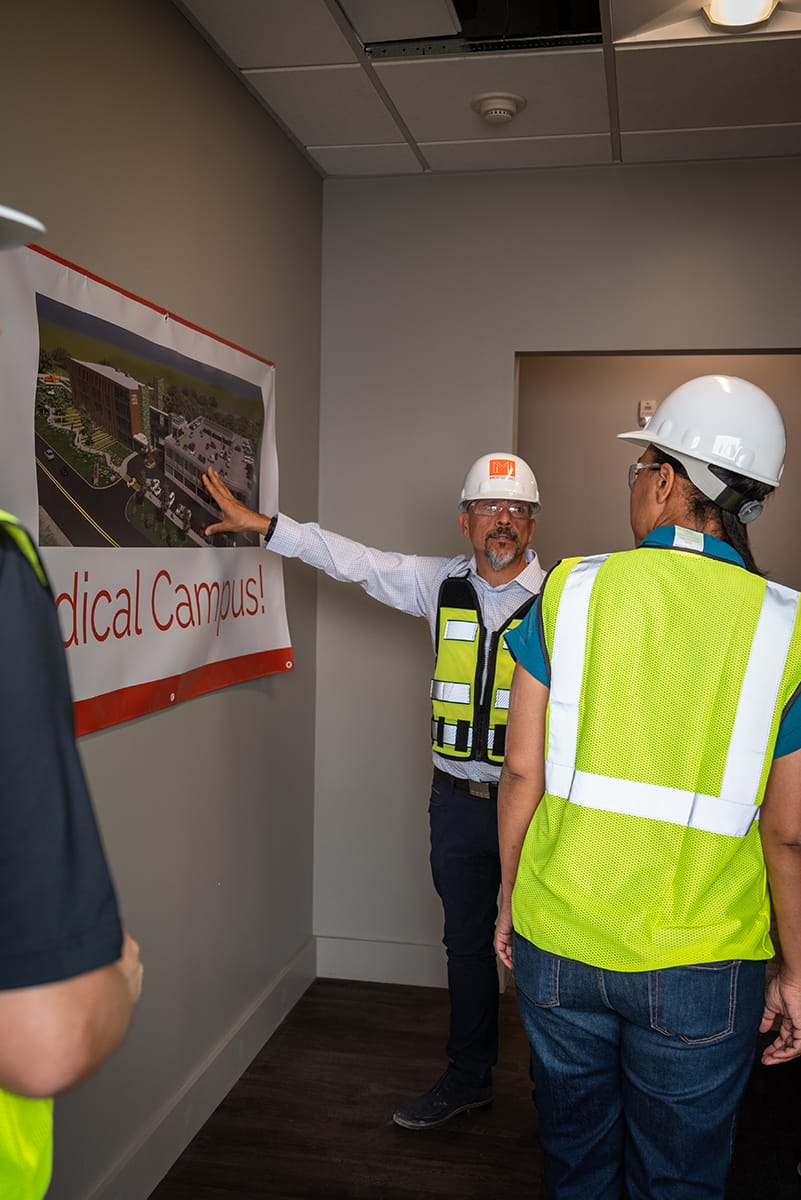
Jim Gabriel shows a mock-up of the completed Memorial Health System hospital currently being built at MODLOGIQ.
Building the Largest Modular Hospital Yet
Athens, Ohio, is a small town of just under 25,000 population located a bit more than an hour away from Columbus, Ohio. It’s the site of the Athens Medical Campus project for Memorial Health System that Gabriel calls a “prototype hospital” for the company.
With about 100,000 square feet of space on four levels, it’s considered a “micro-hospital,” he said, and MODLOGIQ is producing 100% of the space off-site in their factory. That includes everything from mechanical, electrical, and plumbing to interior finishes and casework to about an 85% level of completion.
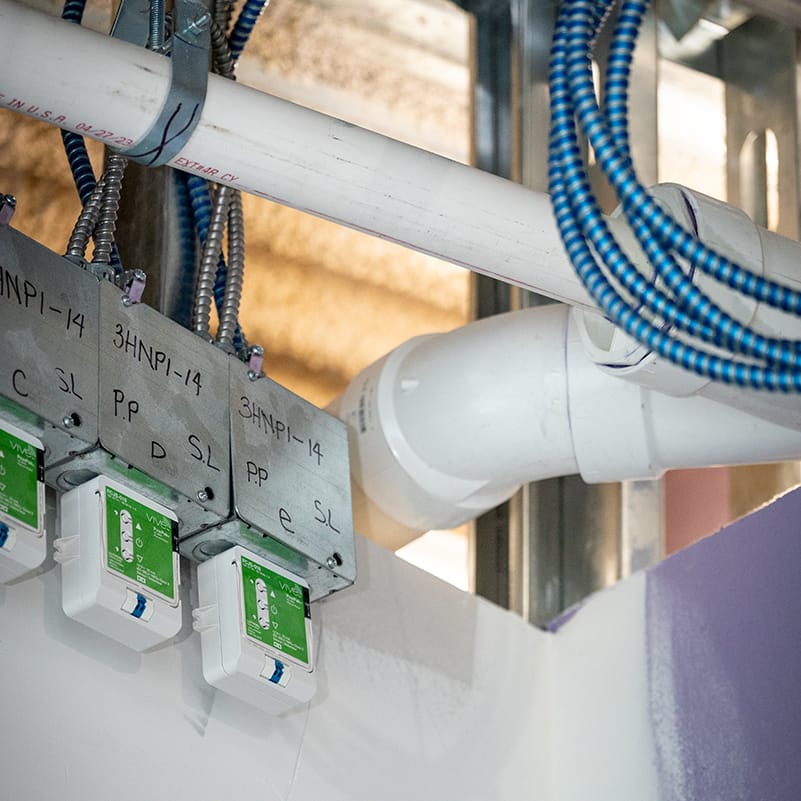
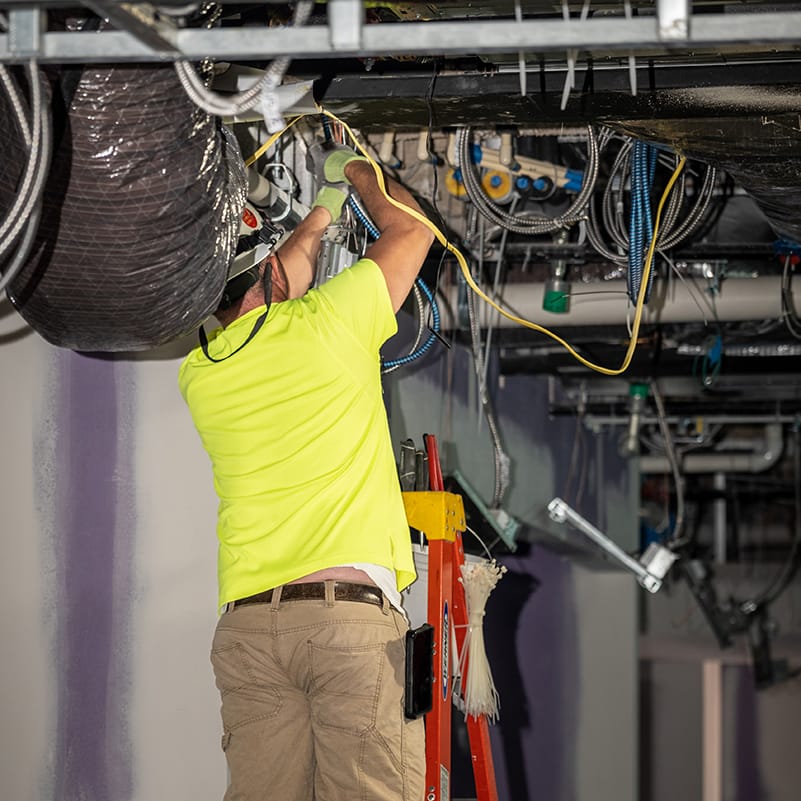
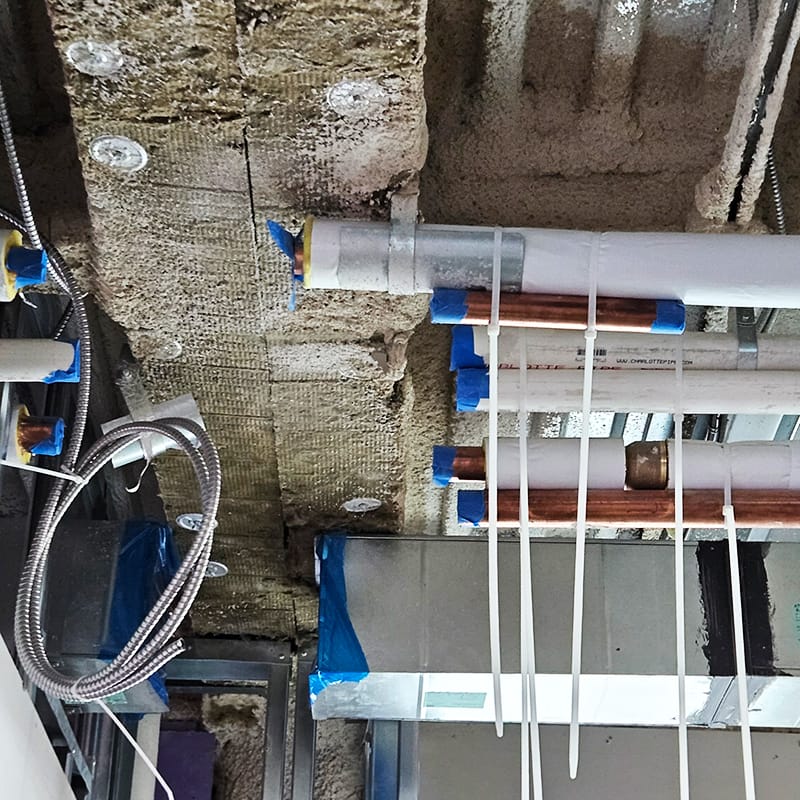
All mechanical, electrical, and plumbing work was completed to about 85%. The remaining connections between modules will be completed onsite.
Working with developers Medical Innovations Development (MIND) and representatives Bob Guessing and Mark Molen, MODLOGIQ started in December of 2021 to design and get approval for the structural steel. As the process moved ahead to site work, finding a general contractor proved to be challenging due to heavy competition from other local construction projects.
“What we learned over the course of this is that there’s a ton of new projects going on in nearby Columbus Ohio, like the Intel chip-manufacturing facility, and Amazon’s got some new facilities that they’re building there. And so it’s really a tight demand for that labor,” he added. “It took some time to find the right contractor on site, but it all came together with the addition of Robertson Construction. And we’ve got what we believe is a really strong team,” he noted.
The Challenge of Adapting Modular to Healthcare
The client’s vision for the project was clear from the start, Gabriel said, but the challenge for MODLOGIQ was to modularize it.
“They knew what they wanted to build, but they didn’t exactly know how they were going to build it. And I think our expertise is really taking that vision and then understanding their programming requirements to achieve something we can build efficiently in our factory,” he noted.
Working with the client through the design process required a series of design modifications, he said. “Can we change the dimension of this area? How can we support this open area without columns everywhere?” he added. “It was a design that was literally happening as we were building, and that’s not typical for modular construction. But because we had the structural done, which started roughly in late summer, we were working through all the other design decisions and gyrations but it was all taking place within that structural framework,” he noted.
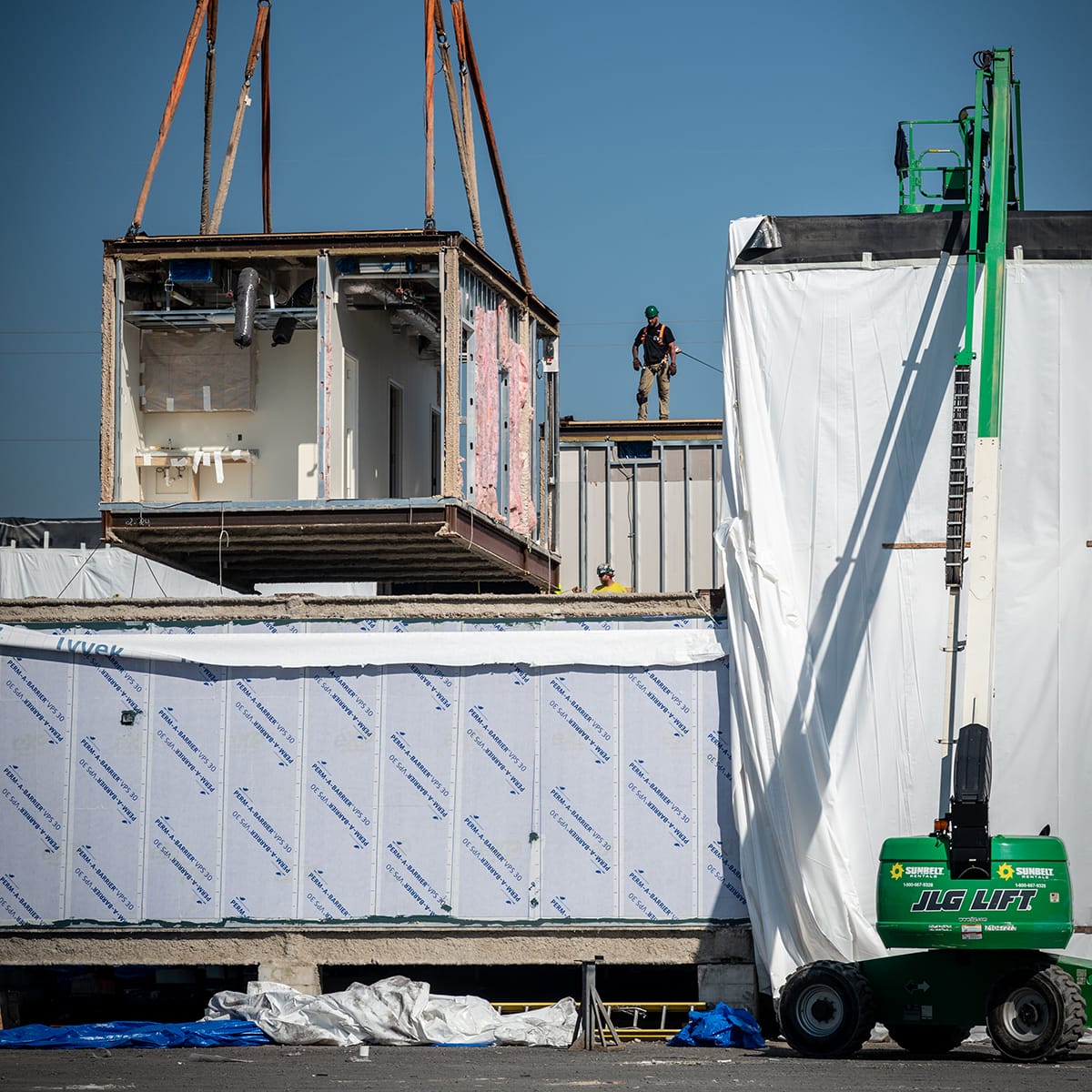
With the structural steel in place, it acted as a sort of guardrail or design constraint that everyone had to work around, which can save time and help to keep the process moving along.
The project used 204 modules with 12 different variations of length and width at a consistent height. Those sizes were driven by the client’s programming requirements for the building, Gabriel said. “The module sizes and configurations are a little less traditional than what would be typical for a modular build,” he added.
What is traditional, though, is meeting all standard codes and other requirements for a commercial building. “There’s no modular hospital design standards; there’s nothing different because we’re modularizing it or fabricating that in the factory,” Gabriel said. “We just have a more efficient way to build it. And it is consistent with all hospital requirements for the state of Ohio and all other AHJs,” he added.
Adding A New Team for the Project
Due to the size and speed requirements of this project, Gabriel said the team knew they couldn’t take the project on at the expense of their other clients or upcoming projects. They decided to move some key staff members to the Athens project, hire some new staff, and create a completely new and separate team for the project.
“We approached this as a separate business unit so that we were making decisions not just from a project standpoint, but from an operational standpoint,” he mentioned. “This is a $65 or $70 million project. How do we need to approach that differently from an operational standpoint?” he added.
Large and challenging projects like this one will always offer some twists and turns, and this one was no exception. As the team moved rapidly through design and then broke ground for construction, some design elements were unfinished. “You don’t like to have those design decisions lingering. There were still some components of the design that weren’t directly related to the building but could have an impact. What was going to happen around the helicopter pad, the parking garage? The adjacency of those structures and how they impact the design,” he noted. Even with those challenges, the MODLOGIQ team brought the project 12 months ahead of a conventional construction schedule, Gabriel said.
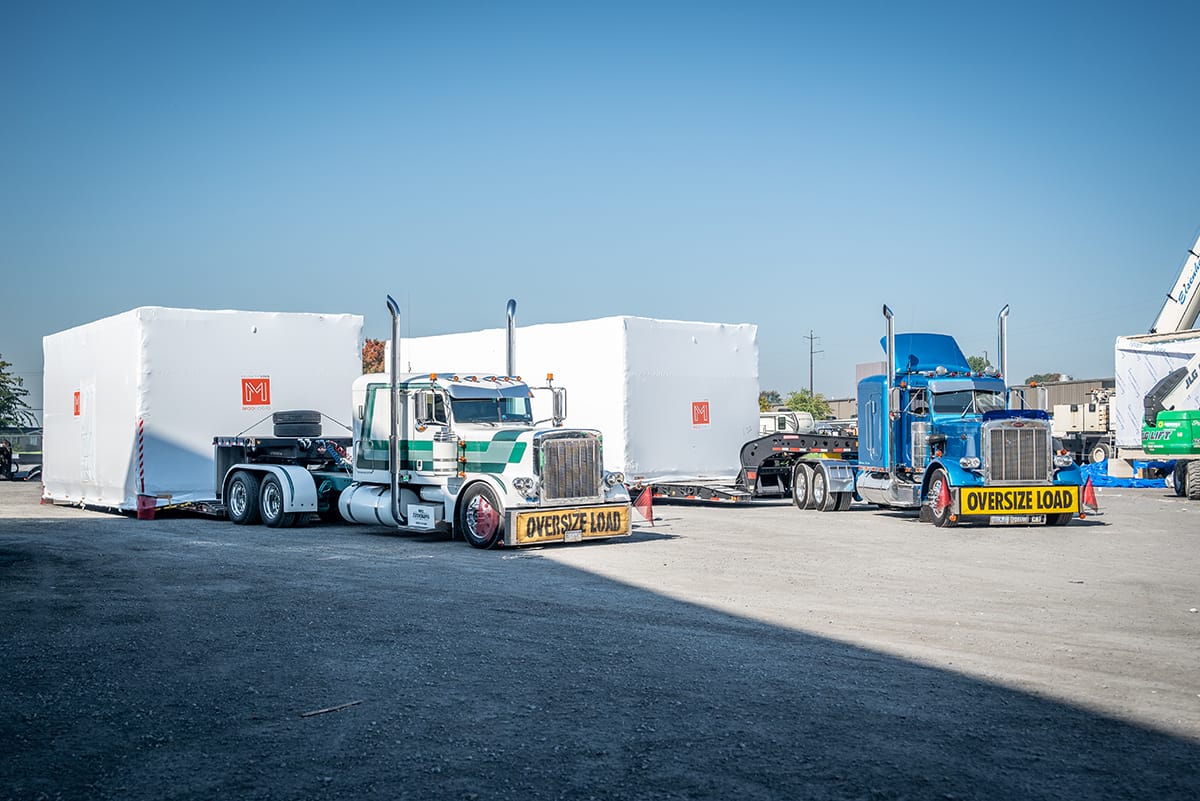
What’s Next for MODLOGIQ?
According to Gabriel, the company’s core value is servant leadership. “I would say that our culture is characterized by and led by a group that is some of the best that I’ve ever worked with in this industry, and I’ve been at it for 30 years,” he said.
To that end, the company is already in discussions on a series of prototype hospital projects, and he’s also interested in looking beyond the hospital environment to leveraging the strengths of modular construction to address the affordable housing shortage and support rapid disaster rebuilding efforts.
“This project demonstrates what we and modular can do. It’s important that we find ways to apply our knowledge and experience in more significant ways,” he said. “How can the modular industry and MODLOGIQ be more relevant in applying the value of offsite modular prefab construction in the rebuilding of our infrastructure?” he asked. “It takes collaborative design and innovative thinking. It cannot be done in a vacuum.”
About the Author: Steve Hansen is a Colorado-based writer with a focus on the built environment—architecture, construction, renewable energy, and transportation. He can be reached on LinkedIn.
More from Modular Advantage
Resia: Breaking All the Rules
Resia Manufacturing, a division of U.S.-based Resia, is now offering prefabricated bathroom and kitchen components to industry partners. Its hybrid fabrication facility produces more precise bathroom and kitchen components (modules) faster and at lower cost than traditional construction. Here’s how Resia Manufacturing does it.
How LINQ Modular Innovates to Bring Modular To The Market in the UAE and Beyond
LINQ Modular, with an office and three manufacturing facilities in Dubai, is a modular firm based in United Arab Emirates. The company is on a mission: to break open the housing and construction markets in the Gulf Cooperation Council (GCC) area with modular.
ModMax: Redefining Modular Construction with Confidence and Precision
ModMax was born out of frustration—frustration with five persistent pain points in modular construction: Permitting bottlenecks. Production delays. Rigid designs. Disconnect between “the office” and the field. Lack of transparency and communication.
LifeArk: Disaster-Resilient Housing from Recycled Plastic and 100-year-old Technology
Wee compares LifeArk’s housing units to Yeti coolers, as they are built similarly. Each component takes 15 to 20 minutes to manufacture, has an R-value of 40, and includes molded slots and chases for wiring, plumbing, fire sprinklers, and other utilities.
Building the Future of Modular Edge Infrastructure
The edge data center market is expanding rapidly, driven by the surge in AI workloads, IoT adoption, and the need for localized compute power. In these environments, sustainability, scalability, and reliability are non-negotiable. Cooling is among the most complex challenges for operators—and one of the most decisive factors in long-term success.
Accelerating Light-Gauge Steel Construction: A Semi-Automated Digital Workflow for Off-Site Projects
For construction professionals, the message is clear. By adopting semi-automation and digitalization, companies can deliver projects faster, more accurately, and more profitably, while also building stronger collaboration across teams. The approach is not about replacing people with machines, but about empowering people with better tools and processes.
Why Modular Data Centers Are Gaining Momentum
Artificial intelligence, high-performance computing, and edge applications push the limits of traditional “stick-built” data centers. They take years build, often struggle with high density workloads, and aren’t optimized for deployments near end users. Modular data center platforms are purpose-built to address these challenges, offering flexibility and scalability to adapt to evolving technologies, while opening new opportunities for the modular construction industry.
Supply Chain Innovation in Action: 5 Habits Every Modular Leader Should Practice
By applying these principles to supply chain practices — collaborative planning, strategic procurement, scenario modeling, digital tools, and transparent forecasting — construction leaders can build value chains that are not just efficient and agile, but truly innovative.
Exploring the Role of Modular Integrated Construction (MiC) in Advancing Circular City Principles – A Survey of Stakeholder Perspectives
The survey findings highlight the significant potential of Modular integrated Construction (MiC) in advancing the development of circular cities. By reducing costs, accelerating construction timelines, and minimizing waste generation, MiC offers a promising approach to sustainable urban development.
The Use of MS POLYMER™-Based Sealants and Adhesives in Modular Building
These products combine flexibility and elastic recovery with excellent adhesion to different substrates and have already shown their usefulness in traditional construction. Now it’s time for them to be put to use in the modular construction industry.

